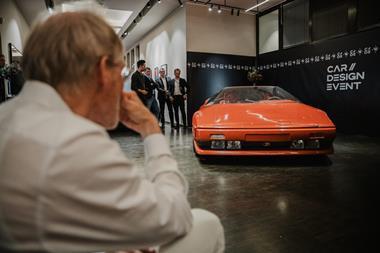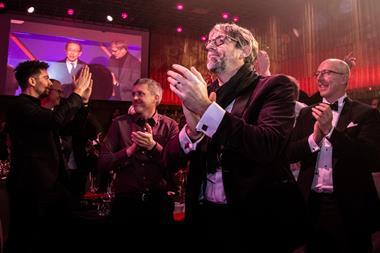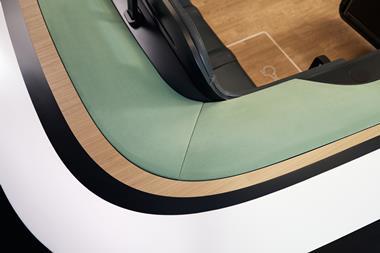March 21, 2003 - From October through December of last year, the Elisava School of Design in Barcelona presented the exhibition 'Expression of Dynamism', including 17 prototypes of vehicles designed by the students of the Masters degree course in Transport Vehicle Design. The projects were on display in the school hall in Plaça de la Mercè in Barcelona.
The Masters degree in Transport Vehicle Design aims to provide not only the necessary skills and tools in car conception but also to design motor vehicles in general. Thus “Expression of Dynamism”, is a compilation of very unusual means of transport, including the design of vehicles for air and water. The projects displayed anticipate trends from a perspective that is free from the everyday pressure of the industry, but with an aim to influence developing models in the market in the near future.
SEAT Mambo
Julio Lozano Benlloch
This is a design based on the main characteristics of sports shoes, which are suitable for all kinds of terrain.
Seat Mambo Roadster tries to reflect the new radical trends in SEAT: design sports cars that are versatile and with a strong bold character. It is a very light four-wheel drive with top performance qualities. The design includes such aspects as the ability to move easily in all kinds of terrain, and it also has advanced or avant-garde connotations. Thus there stands out the interaction between the pilot and the exterior by means of the cabin, a glass dome. Modern architecture is represented by the use of transparencies and articulated structures. The structure is based on a skateboard in terms of suspension and rotation ability, with the rear steering rotating around the central chassis to provide maximum agility.
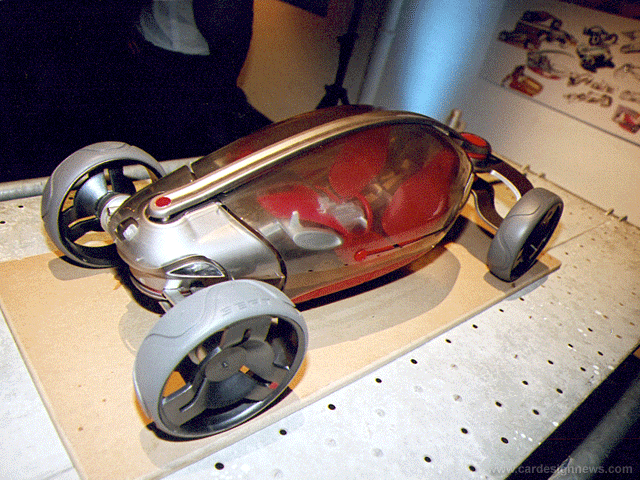
SEAT Mambo by Julio Lozano Benlloch
Airbus VIP Compartment
Tony Gallardo, Carlos Andrés Escalante and Marc Nadal
Interior design of the Super First Class area of the Airbus A380. The project is based on the creation of a space optimised for multiple uses within a specific area for business. The space is divided into two different zones. One is a common area, a social space where people can interact with one another and with the outside, achieving relation, recognition and safety. The second zone is more private: its cabins provide privacy and emphasize such aspects as comfort, by means of objects like a seat that may become fully flat for rest and total relaxation. All of this surrounded by an atmosphere of sophistication and minimalist refinement.
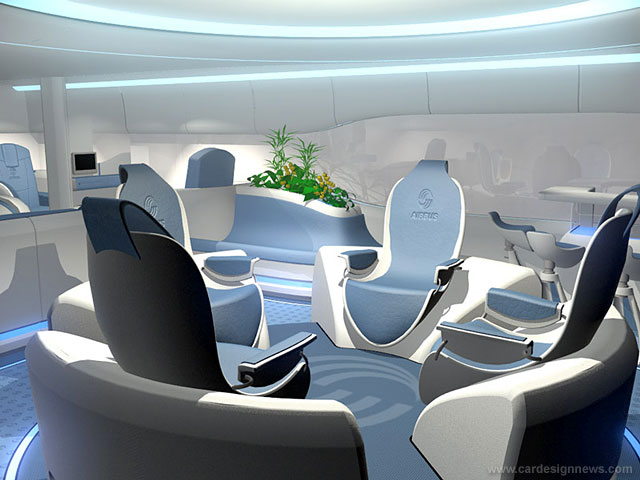
Airbus VIP Compartment by Tony Gallardo, Carlos Andrés Escalante and Marc Nadal
Zeppelin
Rubén Hidalgo Téllez
This means of transport has been designed to enjoy the trip: flying is understood as a cruise, air travelling as an experience, so that the route itself and not just the destination is to be enjoyed. However, in a plane, due to such factors as height and pressure, one cannot have contact with the outside and enjoy the landscape, buildings, people. The dirigible could linger over Paris without technical trouble, without disturbing or interfering with the usual everyday activities below. Leisure orientated, the projected dirigible includes such places as dancing rooms and restaurants, becoming thus an ideal way of enjoying an unusual environment full of luxury.
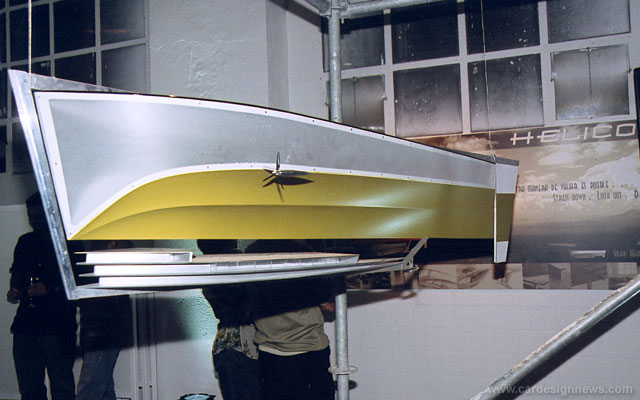
Zeppelin by Rubén Hidalgo Téllez
Citroën DS
Juan Sanz Molina
Citroën created the DS model in the 1960s, commonly known as ‘Shark’, whose new surprising design impressed a society willing to forget the past and prone to changes, novelty and boldness. Beyond modernity, DS had a unique design that lasted for over a decade thus becoming an indispensable icon in the development of car design in the 20th century. The expectation caused by this model and the legend that still surrounds it have made this new version possible. It was a rightful reason to retrieve its main features and create again a completely different vehicle, a reinterpretation that maintains its sophisticated character, its provoking style and its ability to raise great social expectation.
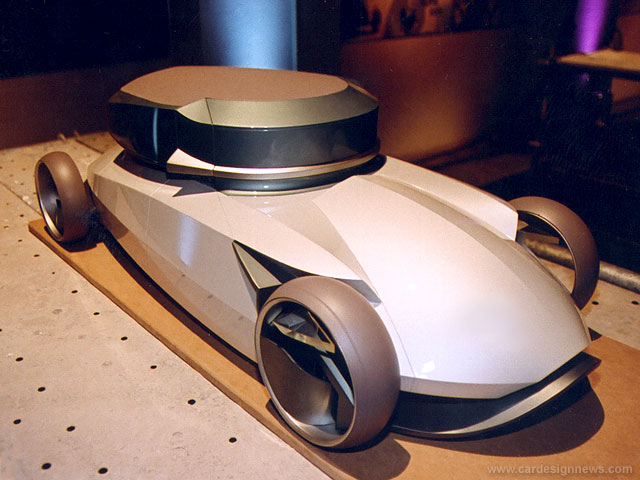
Citroën DS by Juan Sanz Molina
Lexus NS320
José Luis García Ortuzar
More space, more freedom, you choose how to travel. It is a luxury self-driven saloon car, designed for GPS-monitored routes. Highly geometrical exterior design, it is functionally a vehicle for meetings. As a project, it seeks a place in the field of big representative saloon cars, where prestige, comfort and highly demanding standards in safety or equipment are key objectives. It offers a new type of architecture that emphasizes comfort by means of more and better-distributed space. Current saloon cars’ comfort is subject to the usual three-room configuration as if that was the only valid kind of language in this kind of vehicles. Based on architectural principles, this project claims that a vehicle must be designed so that its occupants enjoy the maximum comfort without prejudices towards its exterior shape. An organic conception of the project, the manipulation of space and light, these were Frank Lloyd Wright’s distinguishing marks. His conception of the living space has influenced this project considerably.
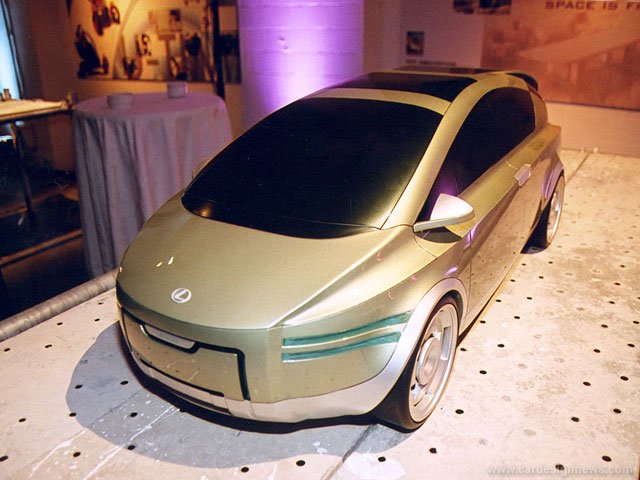
Lexus NS320 by José Luis García Ortuzar
BMW H-Concept
Álex Pirard Corominas
BMW vehicle powered by hydrogen. Oriented towards the promotion of the use of hydrogen, this project is a reflection on the hydrogen engine as a new conception and how this change affects the rest of the vehicle. The BMW H-Concept has been designed to act as an ambassador of this concept. Before running out of all fossil fuels as energy sources, car manufacturers have started to investigate in order to develop engines, which do no finish with them. In this framework, hydrogen has been selected as the best option, since the public specifically demands nature-friendly vehicles, without forgetting the comfort, safety or design of conventional vehicles.
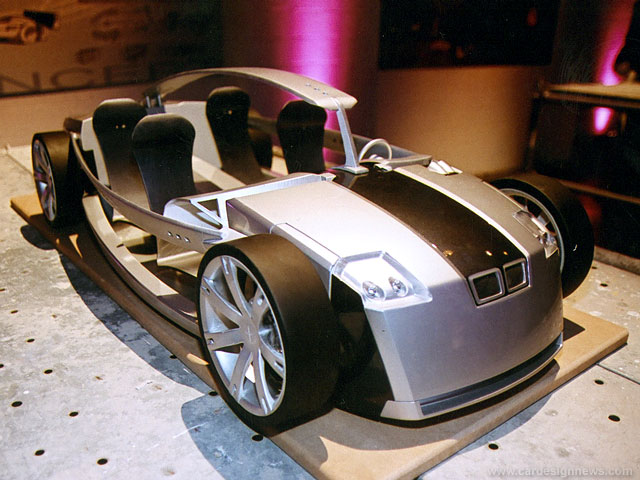
BMW H-Concept by Álex Pirard Corominas
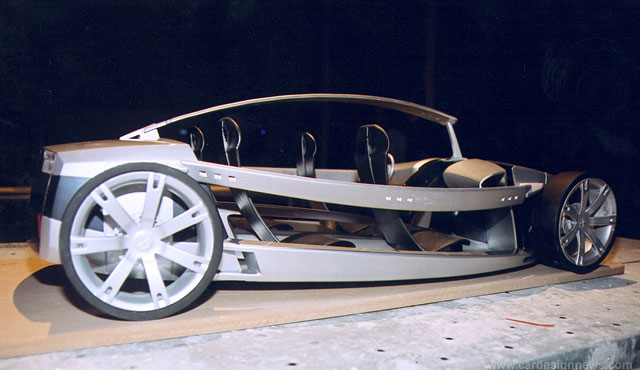
Moon Rover by Land Rover
Carles Bonet Solsona
When it is easy to travel to Mars or the Moon, there will be a new kind of tourist industry on Earth to meet the new interplanetary needs. This vehicle seeks to satisfy such demand and it is presented as a four-wheel drive suitable for unknown grounds and all lands different from ours. Based on space vehicles, it has been designed for space tourism to make it possible for everybody to observe an inhospitable landscape and have fun experiencing low gravity. It has 4 electrical engines placed over the wheels, and intelligent suspension. The interior features suspension so as not to feel the irregularity of the ground, individual on-board computer monitors, and it is driven by means of a joystick. It is a light vehicle, safe, focussed on fun. With few changes, it could also be used on Earth to reach inaccessible places for common off-road vehicles. The project focused on concept, knowledge and technology transfer from aeronautics to civil application.
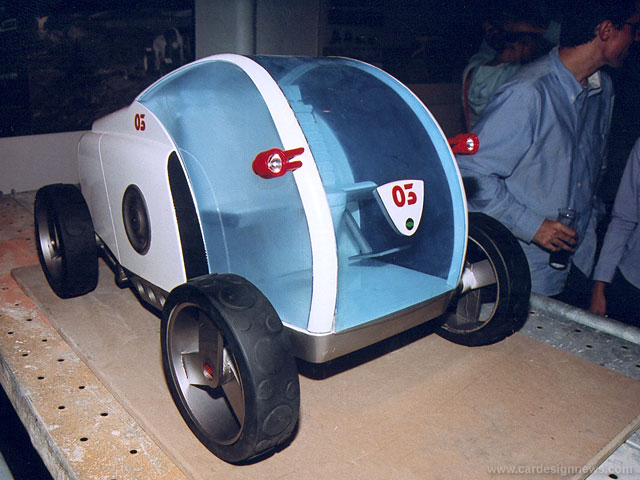
Moon Rover by Carles Bonet Solsona
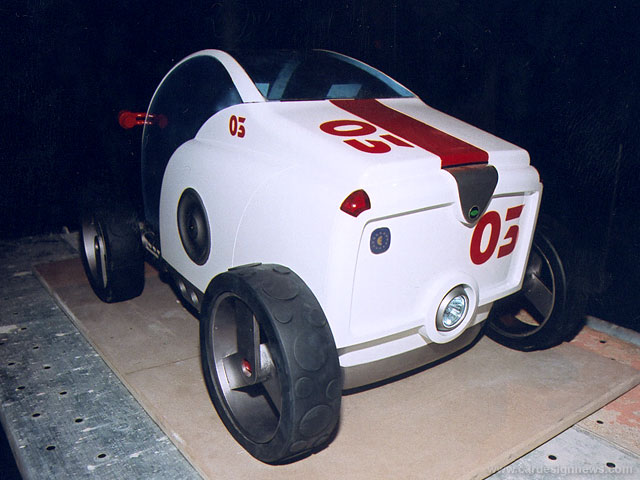
Renault U-Time
Marc Nadal Campistrou
Urban single-seater, designed for Renault, a concept inspired by a fan. Concieved for dense traffic and lack of parking space. It is an electrical vehicle, so it does not pollute (sounds and environment). It acts as a gust of fresh air in and for cities. As far as the style is concerned, it is an urban vehicle whose design resembles the architectural structures based on predominant glass and visible frames, seeking to integrate with the urban landscape and its buildings. Safety is also a very important component. The reduced size has been compensated by a bigger sense of rigidity and strength, to prevent its occupants from feeling unprotected.
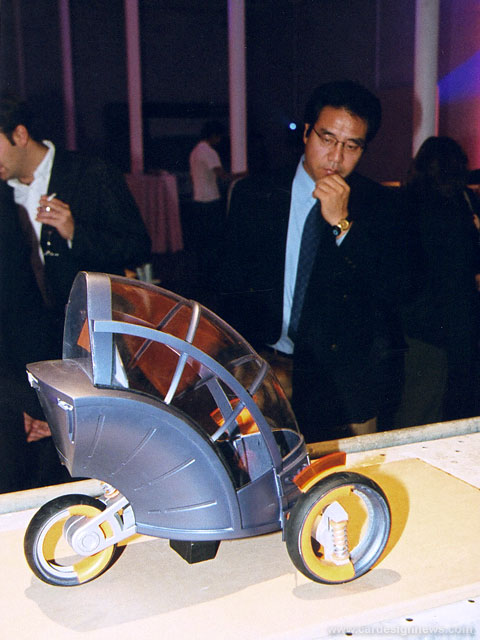
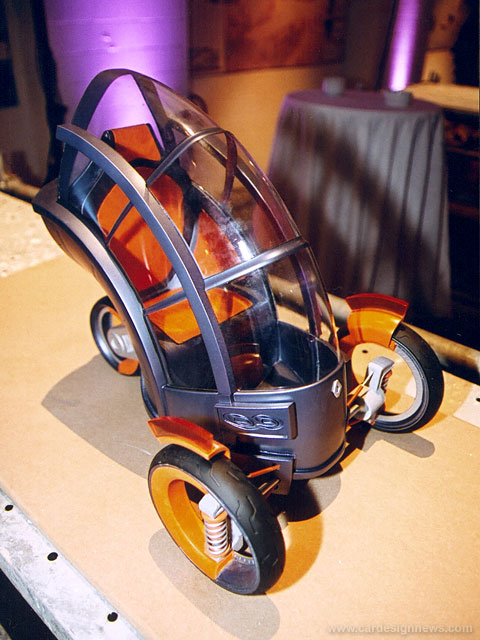
Renault U-Time by Marc Nadal Campistrou
GAudi
Tony Gallardo Ruiz
Inspired by Gaudi’s constructive style, particularly his dragon-like shape, and Audi’s image as a make, this project seeks to remember Barcelona’s contribution to the fields of architecture and design, now also recognised for its industrial design and specifically its car design. The vehicle is conceived as a specific means of transport to visit cities. Transport-oriented but also as a leisure experience. It is a kind of minibus that can travel by land and water and that can be suspended from a wire to resemble a cable railway’s journey. In the LAND position the vehicle “walks” (lower position of the gear) and it stands on the four wheels. In the WATER position the vehicle “swims” (intermediate position of the gear) and the four skates provide stability to the whole. In the AIR position the vehicle hangs from a wire (upper position of the gear) and its four extremities hold the vehicle’s structure.
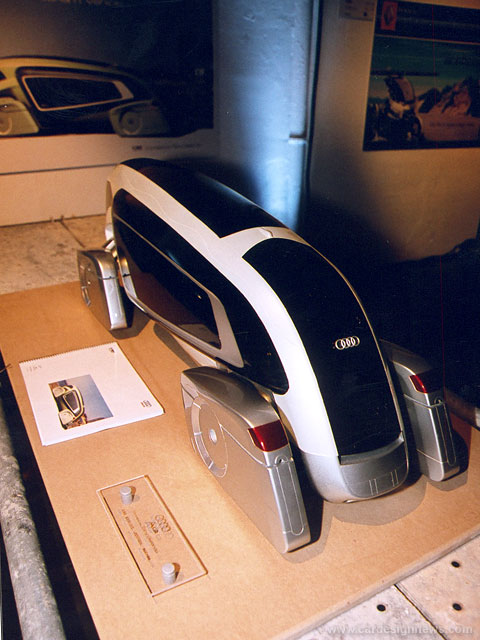
GAudi by Tony Gallardo Ruiz
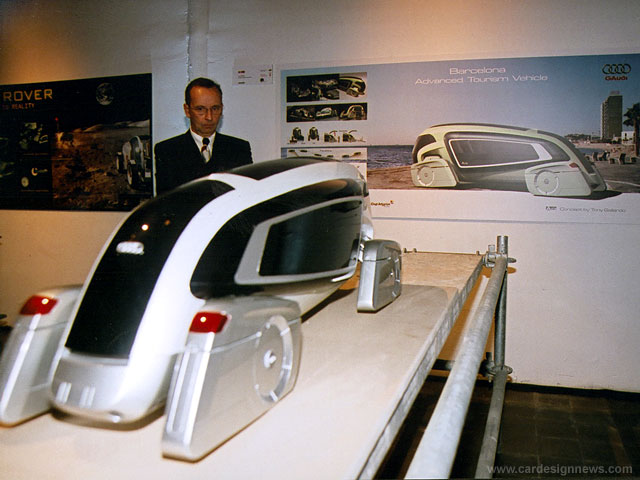
Bugatti Élite Helicopter
Dídac Gelabert Cendra
Luxury helicopter based on the legendary Bugatti. The helicopter has been designed as a personal luxurious means of transport, an alternative to the use of cars adapted to the air. Highly recommended for short trips, without the need of an airport, especially in those cases when the trip by land would be slow and difficult. This prototype is still largely engineering-oriented but it may develop into a more stylish design as an added value to the project.
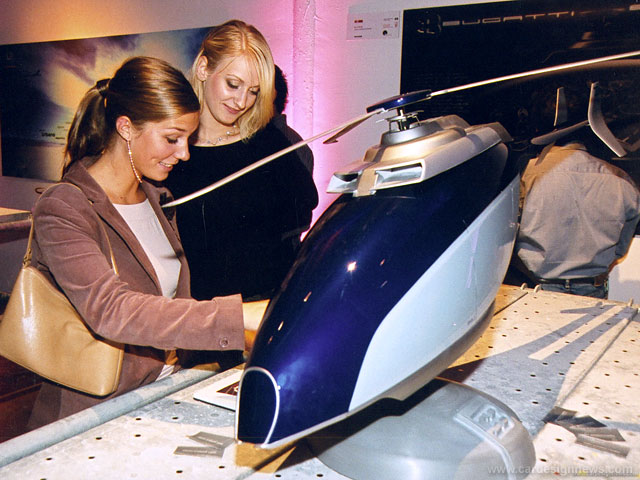
Bugatti Élite Helicopter by Dídac Gelabert Cendra
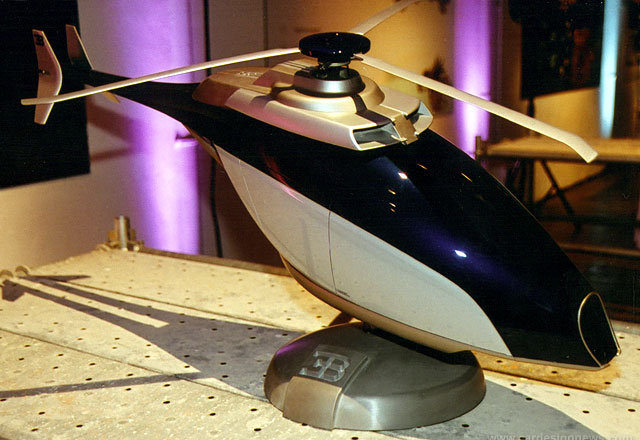
Skylander
Carlos Andrés Escalante Higuera
Who is not interested in flying down a cliff? Enjoy biodiversity in the air and daydream on the ground. A vehicle that can travel by land and air. Equipped with folding wings, it has been prepared to become a kind of glider, but a more powerful one.
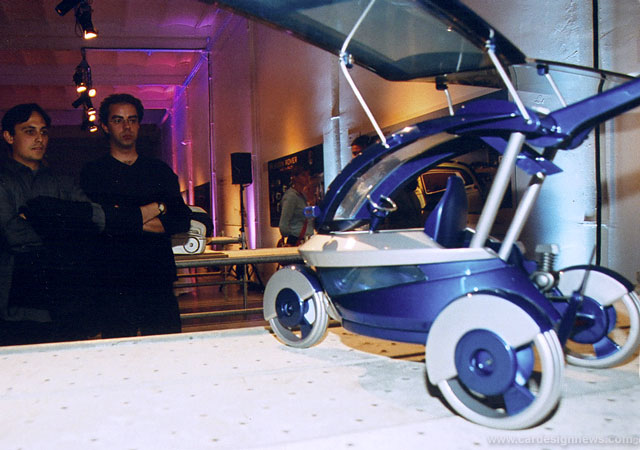
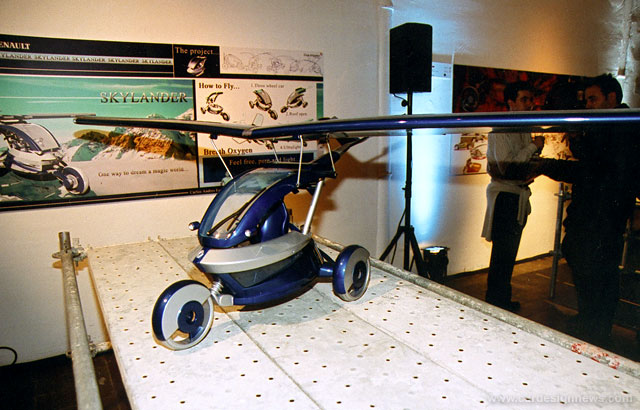
Skylander by Carlos Andrés Escalante Higuera
Cannondale Surrender Db
Torgny Fjeldskaar
Light four-wheel drive, a two-seater powered by an electrical engine. It is inspired by Cannondale all-terrain bicycles, both in its concept and its style. Its main features and agility come from its light materials integrated in a compact model of just the right size, rather than from a powerful engine. As far as the design is concerned, the idea was to move away from current all-terrain cars, many of which were inspired by the mythical Second World War Jeep. In this design we were interested not only in endurance and practicality, but also the necessary comfort to enjoy nature. It works on the basis of non-aggressiveness towards the land, ecological respect. Suitable for two people, it is a good alternative to quads.
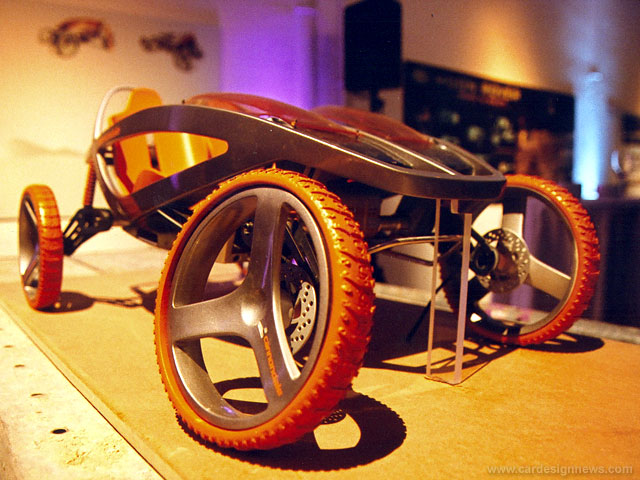
Cannondale Surrender Db by Torgny Fjeldskaar
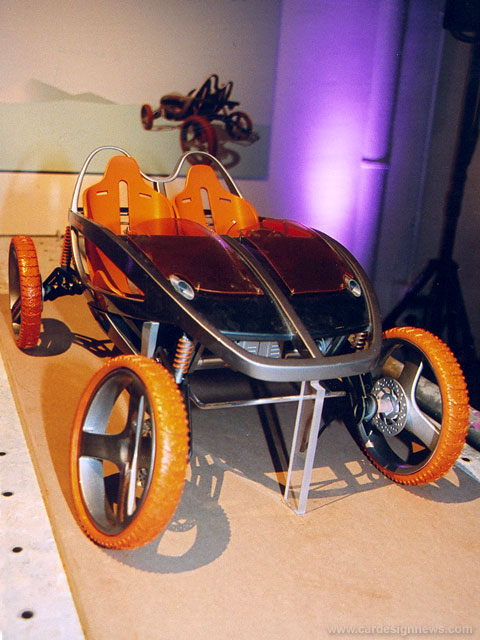
Honda Suid
Boris García Casas
Urban vehicle (size: 300-170-148) with rear-wheel drive and a Hi-Sport motorcycle engine. Its shape is the result of the combination of a car and a motorbike. Based on the facocerus (a small aggressive animal quick in its response) and its characteristic features, it is practical in urban use and a sports vehicle on weekend trips.
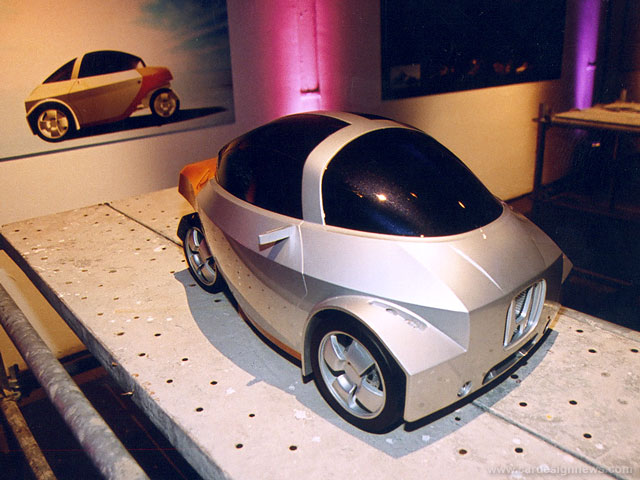
Extreme Concept Sailing Boat
Aitor Azpurua, Tony Gallardo and Alex Pirard
In the field of navigation there have always prevailed classical and traditional ways. This project is based on the concept of sailing and leisure boats from a different perspective, a more creative and suggestive one, less stereotyped and as a new kind of water entertainment. The prototype will be presented at the Boat Show at Fira de Barcelona. It is a sports sailing boat, specially designed to promote navigation as an adventure sport both among beginners and experts. Both its design and facilities are the result of a thorough investigation with the help of professional sailors and navigation experts.
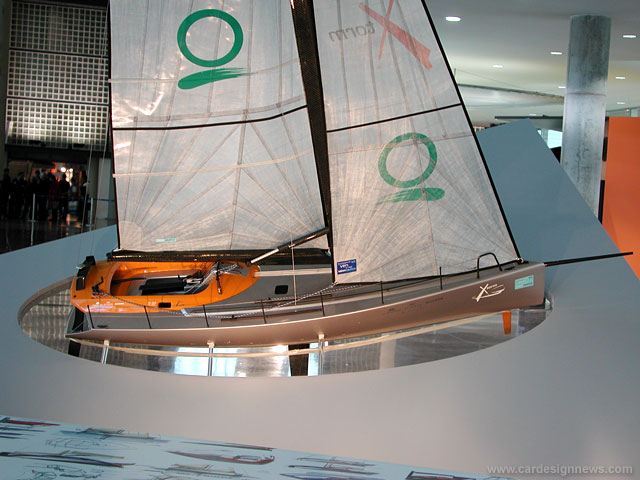
Extreme Concept Sailing Boat by Aitor Azpurua, Tony Gallardo and Alex Pirard
Swiss Army Adventure Tool
Aitor Azpurua
Autonomy is related to independence and to being free to escape anywhere, anytime, and go so far as you like, taking all you need with you. In this sense, here is a four-wheel drive based on a multifunction concept that suggests the structure of the Swiss Army knife, in which several useful elements emerge from a highly compact but practical body. Applied to a four-wheel drive, it is a compact five-seat vehicle, taking into account the big distance from the floor and it combines the possibility of arranging seats so that people can sleep inside, with excellent features suitable for all kinds of terrain. This is why it includes a new suspension system with a wide range of wheel movement. The exterior of the vehicle contains many features suitable for campin, that remain hidden when they are not needed. In the base structure, there are interchangeable modules with very specific functions (Survival module, Sports module for fishing or cycling, additional Battery module or Load module). It is suitable for difficult grounds and adventure sport holidays. It is aimed at private owners as well as governmental organisations, rescue teams and the army.
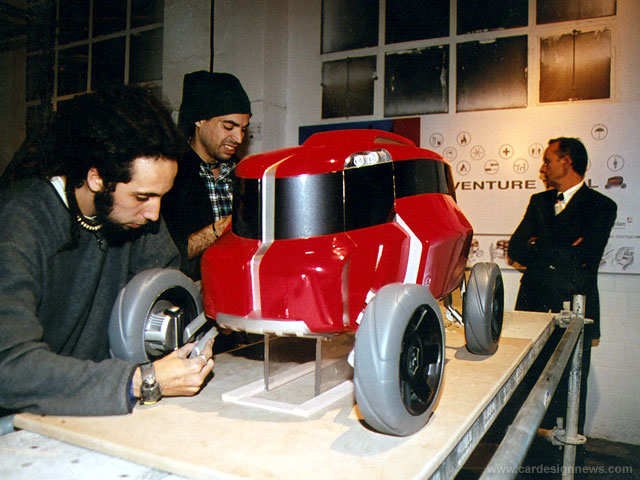
Swiss Army Adventure Tool by Aitor Azpurua
Pegaso Z-202
Raúl Hernández Tabarnero
Sports car. Updated version of the Z 102 Pegaso, a model that helped the make become one of the best in the world, and was a milestone in the Spanish car industry. It was characterised by its state-of-the-art technology, style and by its big success in sports competitions. This is why Pegaso vehicles became a reference point among those of their time. They had a distinctive design, as beautiful as simple, with predominant good taste but without the strong personality conveyed by its aggressive roof rack.
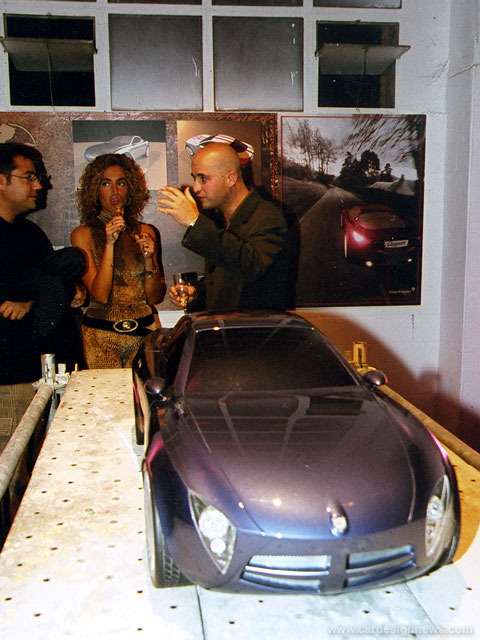
Pegaso Z-202 by Raúl Hernández Tabarnero
Limousine Lincoln
Marc Franch Ventura
Luxury cars have always had a special magnetism, becoming the object of many people’s desires in modern society. This proposal offers a new point of view of luxury towards the future; it intends to make the most of new technologies. The design focuses on facilitating occupant interaction, multimedia and achieving a personalised atmosphere. Such guidelines have brought about an unusual interior configuration that leads to a surprising exterior structure based on the language of musical instruments. Thus, a trip in this vehicle is much more than a new philosophy of travelling; it is also a feeling of being part of something extremely distinguished and exclusive.

Limousine Lincoln by Marc Franch Ventura
Elisava School of Design
Elisava Escola Superior de Disseny started its Master degree in Transport Vehicle Design four years ago. The course, with national and international students, is based in Barcelona, a city which constitutes a cultural reference and which has become the Mediterranean capital city of car design. The Elisava course is regarded as a competitive option to the other major design courses given in Europe, and this has been reflected in the projects and on the strong job prospects of the Masters graduates.
The programme is a one-year course which aims to produce professionals with strengths in innovation, and skills in up-to-date computer and modelling tools. The Masters students undertake projects which investigate new concepts for the design of air, water and road transport, and they explore the interior and exterior of each vehicle.
One of the crucial aspects of the development and approach to the master’s is the contribution of the business world to the course. The course has benefitted from the close cooperation with Rücker Ibérica engineering, which has sponsored the Master degree since its first edition in 1998. Other industry collaboration partners include Airbus, SEAT, Artyplan and Dycosa.
Elisava is a pioneer in the teaching of design in Spain. The school was set up in 1961 and is part of CIC Cultural Institution. Assigned to the University Pompeu Fabra since 1995, the schools courses include Architecture, Engineering and Industrial Design. The postgraduate programmes include: Masters in Design of Goods Vehicles, Masters in Design of Multimedia Interfaces and Masters in Design and Public Space.
The school has bilateral agreements with colleges in Europe, USA and Latin America, and takes part in the Cumulus design schools association, which gathers together the best-known centres in each country.
Contact:
Elisava Escola Superior de Disseny
Ramón Parramón
Ample 11-13 - Pl. de la Mercè
08002 Barcelona
Email: sicad@elisava.iccic.edu
Tel: +34 933 174 715
Fax: +34 933 178 353
































